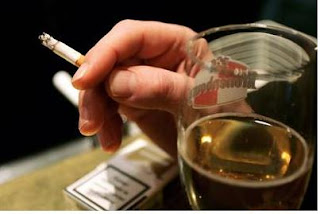Most of the time when we hear steroids we think of those drugs which boosts the muscles and turns us into Incredible Hulk’s but doesn’t make our skin green. Our body too is cable of producing its own steroids functioning as hormones and capable of biochemical effects which affects physiologic functions. That is why It very important to develop ways in measuring them to provide substantial diagnosis of disease and treatment.
Thanks to the different leaps towards the advances of science, different analytical procedures are now available.
The most common technique is the COLORIMETRIC METHOD. This method measures steroid metabolites that are present in the urine of the patient.
URINE 17-KETOSTEROIDS
These compounds contain a carbonyl oxygen group at the number 17 carbon on the D ring of the steroid. They are essential compounds for the formation of the different types of steroids thus being labeled “precursors.” Moreover, this analyte is used to evaluate the androgen production.
The specific method used is the ZIMMERMANN REACTION and here’s the simplified procedure.
1. First, 24-hr urine is collected.
2. Then it is hydrolyzed with a strong acid (a mixture of HCl and glacial acetic acid). This process will remove glucoronic acid and sulfate conjugates and it will render the steroid soluble to organic compounds.
3. Extract with dichloroethane.
4. Wash with sodium hydroxide to remove interfering substances
5. Zimmermann reaction takes place when steroid reacts with m-dinitrobenzene in alcoholic KOH.
6. It would look something like this….
Careful though… many drugs may interfere with this test:
URINE 17-HYDROXYCORTICOSTEROIDS
The first method of measuring these substances is the PORTER-SILBER REACTION. This method measures only cortisol, cortisone, 11-deoxycortisol and some of their reduced derivatives. It is also termed as the 17-hydroxycortecosteroid Test. The dihydroxyacetone side chain of the steroid reacts with 2,4-dinitrophenylhydrazine to form a yellow derivative. It is measured spectrophotometrically at a maximum absorbance of 410nm. It also involves the initial steps of preparations like:
1. Hydrolysis with enzymes
2. Extraction to an organic solvent
3. Washing of sodium hydroxide
4. Addition of reagent and heating to allow reaction to take place
To simplify it, here’s the formula:
Again the Zimmermann Reaction may be used for this test. This time, it does not only measures cortisol derivatives but also other cortisol metabolites under the group called 17-ketogenic steroids. However it requires more preparation when it comes to measuring these substances using the Zimmermann reaction.
1. First, glucose is measured using a dipstick. High concentration of glucose may interefere with the results.
2. Specimen must be extracted with ethanol-ether solvent if glucose is higher than 500mg/dl.
3. If not, the assay may be continued.
4. Sodium Borohydride (NaBH4) to convert the steroids to the 17-ketoderivatives.
5. Then add sodium bismuthate (NaBiO3)to remove all side chains
6. Destroy excess sodium bismuthate by mixing sodium bisulfite
7. Hydrolyzed with acid to remove any conjugates
8. Extraction with organic solvent
9. Washing with Sodium hydroxide
10. Solvent evaporation
11. And finally Zimmermann reaction may be performed
Quite a complicated principle for a very simple test right? Aside from the colorimetric procedures other methods are taken advantaged by Clinical Chemistry to measure steroids and they are:
a. Immunoassay Techniques
b. Gas Chromatography
c. High Performance liquid Chromatography
REFERENCE:
Clinical Chemistry: A Fundamental Textbook by Donald Calbreath

















